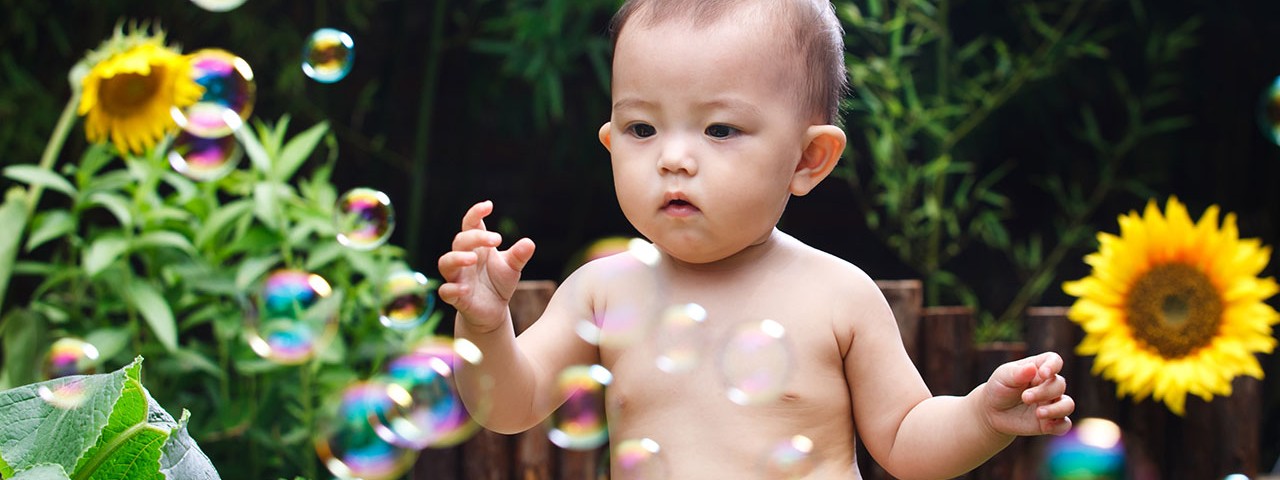Less Structure Benefits Preschoolers
- Tweet

Children are born ready to learn, with a natural preference for new and novel experiences. Curiosity drives young children to learn about the world around them. This internal motivation makes learning its own reward. Young children get satisfaction from gaining new knowledge or skills; they don’t need the promise of external rewards.
For young children, learning is its own thrill. They don't need the promise of rewards!Tweet this!A child with a strong innate motivation to learn is willing and eager to try new and challenging tasks. She takes pleasure in learning and exploring and shows persistence when she encounters difficulties.
Play is a Key Part of Early Learning
Early parenting can affect children’s persistence and willingness to try challenging activities. Early childhood education can also play an important role in promoting children’s curiosity.
In my work as Executive Director at Calvary Place Childcare Center, I regularly see the educational benefits of allowing children’s natural curiosity to flourish. Like many high-quality programs, we strive to create an environment with a wide variety of opportunities for each child to learn at his own pace and in his own style.
Tennessee’s Early Learning Developmental Standards incorporate this approach. The guiding principles of the standards include a recognition that children are active and eager learners, that play is a key part of early learning, and that children need rich learning experiences that encourage them to explore their environments.
Children learn most effectively when they learn according to their own interests and needs. Accordingly, early childhood professionals in Shelby County are increasingly being trained to create a less regimented classroom environment.
This child-oriented approach has the additional benefit of blending social and emotional learning with traditional language and math development. As they play together, children are learning how to share, to get along, and to communicate with each other. These social skills are as critical for school readiness as knowing letters and numbers.
Unstructured Teaching Environments Foster Curiosity
Some parents are uncomfortable with this approach to early education. I remember the skepticism of one mother whose search for childcare included a visit to the center where I worked at the time. As she looked around the room at the children engaged in various kinds of free play, I sensed her disapproval. I tried to explain that this was a central part of our approach to learning. However, she would have none of it. “My son needs to be sitting at a table learning how to write his ABC’s and numbers.” Her son was barely two years old.
Like many people, she believed that teaching requires structured activities and predetermined goals. On the contrary, these are barriers that make learning a chore. Our teachers focus on providing encouragement and guidance as children forge their own paths. In early childhood education, children’s natural desire to learn is our most powerful tool we have.
Unfortunately, research indicates that once they begin formal schooling, children’s curiosity begins to fade. Numerous studies have documented a steady decline in curiosity and intrinsic motivation beginning in the early elementary years.
Why is this the case? When a child starts kindergarten, the classroom becomes a much more structured place. Soon, tests and grades become the central feature of the learning experience. Research shows that when it comes to encouraging learning, external rewards are not only less effective than natural curiosity, but actually undermine it.
Curious Children Love to Learn
Child-oriented learning should continue beyond early childhood programs. Making it an integral part of every stage of education could transform school into a place where children’s natural drive to achieve is enhanced rather than endangered.
In an environment where teachers are under constant pressure to ensure that students meet benchmarks and perform well on standardized tests, even well-meaning teachers may unintentionally hinder children’s natural enthusiasm for learning.
Susan Engel, an early education specialist, relates the following scene, which she witnessed while visiting an elementary classroom. Under the close supervision of their teacher, the students were working on a science activity using materials that had been passed out to each table. Within a few minutes, one group of children gradually deviated from the written instructions and began to invent their own activity using the wooden blocks and pieces of string. When the teacher saw them, she called out for them to stop, adding “I’ll give you time to experiment during recess. Right now it’s time for science.”
Debbie Kallaher is Executive Director at Calvary Place Childcare Center, an adjunct faculty member of Southwest Tennessee Community College, and board member of the Memphis Association for the Education of Young Children. This article was originally published by The Commercial Appeal.
